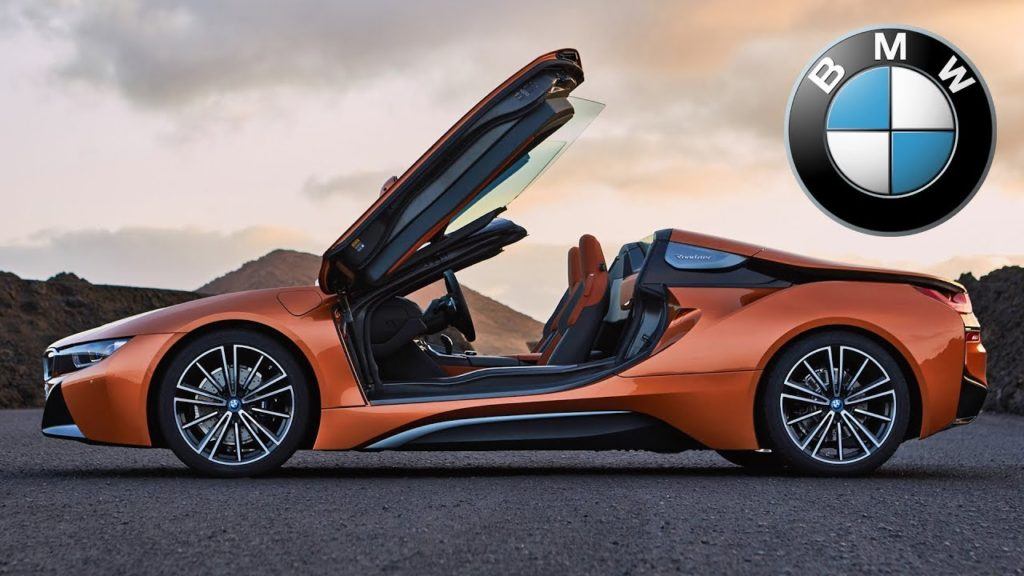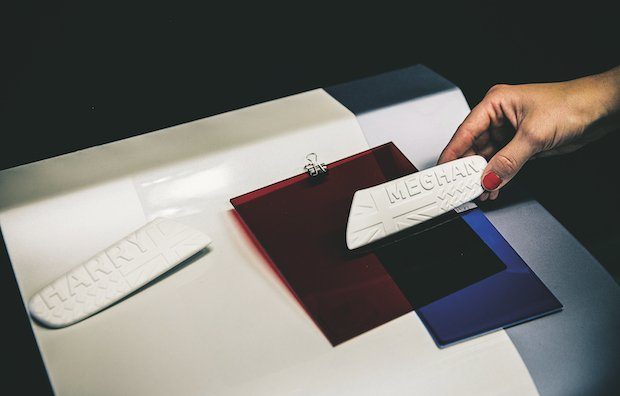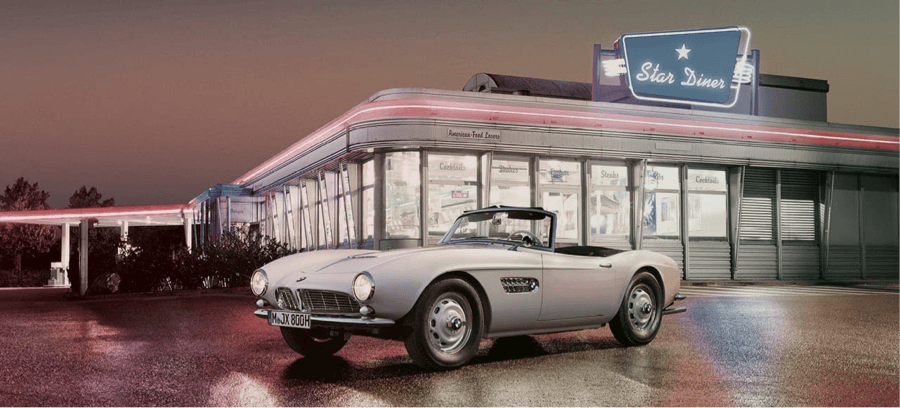3D Printed Cars – The Future of Auto Manufacturing or a Pipe Dream?

BMW releases the new awe-inspiring i8 roadster becoming the first OEM to mass produce a printed component for a road car. Is this the start of a technology revolution in auto manufacturing?
Exhibit 1: 2018 BWM i8 Roadster
The BMW Group (“BMW”) is a pioneer in the use of additive manufacturing (“AM” or “3D printing”) for mass production in the automotive industry.[1] The German auto manufacturer has been researching and producing in the field of AM technologies since 1990. Earlier this year, BMW launched the new i8 Roadster, and in doing so created the first metal 3D printed part to be successfully produced for a road car.[2] BMW has ambitious goals for how it expects AM innovation to revolutionize auto manufacturing in the future both in terms of product design and manufacturing process improvement.
There are a number of reasons why the AM megatrend is important and potentially game changing for the automotive industry:
Lighter & Stronger
Auto manufacturers are constantly seeking to maximize strength and minimize weight for functional, safety and regulatory purposes. The 3D printed component in the new BMW i8 Roadster is a small metal fixture in the roof that is 10 times stiffer and 44% lighter than the plastic injection moulded counterpart in the previous model.[3] An AM process called topographical optimization, has allowed BMW to optimize strength and weight in ways that are virtually impossible to do through traditional manufacturing methods.[4] Lightweighting is also becoming more important for OEMs in the face of more stringent emissions regulations.
Customization & Remanufacturing
AM allows for increased product customization in large part because costly and time consuming tooling and retooling is not needed in the process. Design changes to 3D printed parts can simply be adjusted through programming software.[5]
 Exhibit 2: A custom 3D printed panel in the BMW i8 Roadster
Exhibit 2: A custom 3D printed panel in the BMW i8 Roadster
Exhibit 3: Auto manufacturer Mini recently created a custom Mini Hatch for the royal wedding of Harry and Meghan, which was eventually auctioned off for charity. Certain components, including the side scuttles (side panels) were customized with Meghan and Harry’s names through 3D printing techniques.
In addition to customization, there is new trend in the automotive industry for re-manufacturing. This is to reduce inventory or generate parts that OEMs may not be producing or storing anymore. Other industries with long lasting products are also using 3D printing to more efficiently and cost effectively produce spare parts for older models. For example Swiss industrial company ABB uses AM to produce spare parts for marine diesel engines, which often have a life of 15-20+ years. With older cast components, tooling is often no longer available. Reference parts and original drawings can be used to create imaging data to 3D print components quickly and cost effectively.[6]
Exhibit 4: For decades, the legendary BMW 507 was thought to be missing, but then the icon was found and restored with meticulous care. Additive manufacturing played an important role in reconstructing the door handle and window lever.[7]
Decentralized Manufacturing
BMW sees huge potential in AM, beyond simply an end to tooling and more cost-effective prototyping. They expect that with time, it will become possible to produce components directly where they are ultimately needed – an idea that harbors tremendous potential.[8] The auto manufacturer is already using AM to make prototype components on location in Spartanburg (US), Shenyang (China) and Rayong (Thailand). Going forward, they believe there is potential to integrate it more fully into local production structures to allow small production runs, country-specific editions and customizable components – provided it represents a profitable solution.[9]
BMW’s management team continues to invest in the additive manufacturing space to seek short-term incremental gains as well as a hope for more radical innovation in the long run. In April 2018 management announced that BMW will spend €10mm on a new dedicated additive manufacturing campus in Munich to consolidate its AM R&D efforts and continue to evaluate new and existing technologies suitable for commercial auto production.[10] BMW has also invested in numerous AM technology startups through its venture capital arm BMW iVentures.[11]
The development of the new i8 Roadster with its 3D printed component was the culmination of a 10 year development process, demonstrating that while the lead times are long, BMW has been able to reap the benefits of early investments in the space. Looking ahead, I think BMW iVentures should also partner with self-driving car startups to incorporate AM expertise into the cars of the future. While this type of technology may be a few years away, this partnership is in line with BMW’s long term strategy of staying at the forefront of auto innovation (recall they have been investing in AM since 1990).
While BMW has made significant progress in AM in recent years, I remain skeptical about its viability in terms of decentralizing manufacturing for a global business such as BMW. While they have shown that incremental innovation gains can be made, I believe large scale decentralized commercialization will be very cost prohibitive, even as technology advances in the long term. In addition to the overall high cost of AM today, cars will require very large 3D printing machines and the printing itself will be slow relative to current traditional production and therefore not conducive to large-scale auto manufacturing.
A few years ago some thought AM wouldn’t move beyond prototyping, but BMW has defied that. The question is, can they go even further and revolutionize the way cars are produced through AM? Is decentralized manufacturing through 3D printing a possibility or is it just a pipe dream?
(Word count: 788)
Footnotes:
[1] Clare Scott, “BMW Impresses with 3D Printed Roof Bracket for BMW i8 Roadster,” 3D Print, August 13, 2018, https://3dprint.com/222268/bmw-3d-printed-roof-bracket/, accessed November 2018.
[2] Ibid.
[3] Daniel O’Connor, “The Ultimate Printing Machine – How BMW is applying 3D printing to commercial vehicles,” TCT Magazine, August 21, 2018, https://www.tctmagazine.com/3d-printing-news/the-ultimate-3d-printing-machine-bmw/, accessed November 2018.
[4] Jeff Kerns, “How 3D Printing Is Changing Auto Manufacturing,” Machine Design, November 14, 2016, https://www.machinedesign.com/3d-printing/how-3d-printing-changing-auto-manufacturing, accessed November 2018.
[5] “Learn How 3D Printing & Automotive Design Are Merging,” IEEE Spectrum, https://spectrum.ieee.org/transportation/advanced-cars/learn-how-3d-printing-automotive-design-are-merging, accessed November 2018.
[6] “Production of casted spare parts in reduced lead-time,” Swiss AM Guide 2018: Exploring new applications in additive manufacturing, 2018: 38-40, https://app.industry.plus/img-dyn/cms/amnetwork/download/pdf/AMGuide_2018_view.pdf, accessed November 2018.
[7] The BMW Group, “Additive Manufacturing: 3D Printing to Perfection,” https://www.bmw.com/en/innovation/3d-print.html, accessed November 2018.
[8] “BMW Group plans Additive Manufacturing Campus: Technological expertise in industrial-scale 3D printing to be consolidated at new location,” press release, April 16, 2018, on BMW website, https://www.press.bmwgroup.com/global/article/detail/T0280159EN/bmw-group-plans-additive-manufacturing-campus:-technological-expertise-in-industrial-scale-3d-printing-to-be-consolidated-at-new-location?language=en, accessed November 2018.
[9] Ibid.
[10] Ibid.
[11] Ibid.






Excellent article! As a BMW owner I find this incredibly intriguing. The cost of BMW parts are exceptionally high and I am curious to know how this would affect future pricing as well as delivery. In addition, I am curious to see if they would exclusively use this technology for BMW’s own shops, likely putting other ‘Mom and Pop’ mechanics out of business. Excellent insights for the progress made and the implications that this could have in the future.
Really insightful piece! I totally agree with you on the benefits of 3-D printing especially along the customization aspect as more and more people strive towards individuality. I’m also skeptical of a truly decentralized approach to manufacturing just because it seems that 3-D printing still can’t be used to make cars at scale cost-effectively. However, I can see how a decentralized approach could be adopted for smaller batches or country specific runs like you mentioned and I imagine that there would be some potential cost benefits around export tariffs as well.
Awesome article! I agree that decentralized manufacturing vis-a-vis additive manufacturing (3D printing) would worsen BMW’s cost profile unless significant efficiency improvements were made to the technology. However, I am also skeptical about the usefulness of 3D printing in the repair “aftermarket” in the long-term. In my opinion, if self-driving cars come to fruition, then there will be very few accidents, meaning the market for replacement parts will dry up significantly. For these cars of the future, the components that receive the most wear and tear won’t be those that a #D printer could replace (such as tires and elements of the electronics chasis).
I really enjoyed your essay. I think the most intriguing application that you mentioned is re-manufacturing. I have read that auto part suppliers are often required to maintain capacity for producing parts for years after the model has stopped being produced or else hold significant inventory for spare parts. I think AM could provide an alternate approach to the spare parts business, where parts could be printed in a JIT manner rather than holding onto inventory for years to come, thus providing significant savings to the auto parts suppliers.
Great read! It is inspiring to see a breakthrough in 3D printing car components. I would agree that 3D printing would be a very attractive feature when it comes to customization and remanufacturing. I would be interested in learning about how BMW combines its internal R&D efforts with the many investments they are making in related start-ups, the timeline of when AM will be used in mass production and also their cost-benefit analysis on a decentralized manufacturing approach.
Love the article and this topic. 3D printed auto parts also introduce the possibility of efficiency and performance gains that would never be possible in their absence. Koenigsegg, a Swedish hypercar manufacturer, 3D prints its turbo chargers on its top of the line Agera. The 3D printed turbos have a variable A/R ratio meaning that the inner geometry of the turbocharger spiral actually changes depending on the engine RPM, maximizing power producing efficiency – something that was incredibly technically challenging and added a tremendous amount of weight previously. This type of turbocharger is now being developed for smaller, < 1L engine cars, to help produce more power per liter and make economy cars more efficient. There's a LOT more that can be done!